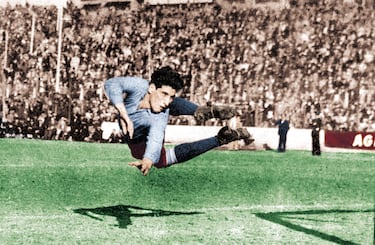Champions League semi finals: what happens if there’s a tie?
Europe’s biggest clubs fighting it out over two legs, all aiming to triumph in club football’s biggest prize, UEFA’s showpiece competition.

The Champions League quarter-final draw threw up four mouthwatering double-headers and none of the fixtures disappointed. The teams progressing to the semi-finals of the competition are amongst Europe’s great clubs, with one somewhat surprising addition given their domestic form.
Bayern Munich and Real Madrid lock horns after the Spaniards knocked-out last year’s winners, Manchester City. Paris Saint-Germain, meanwhile, completed a stunning comeback against Barcelona, earning a semi-final place with Borussia Dortmund. With the first legs ending Bayern 2-2 Madrid and Dortmund 1-0 PSG, more drama was almost guaranteed in this week’s fixtures. Dortmund got the job done in Paris and are into the final, so who will join them, and what happens if the scores are level at the end of these games?
Champions League semi-final fixtures
Tuesday, 30 April (first leg)
Bayern Munich 2-2 Real Madrid
Wednesday, 1 May (first leg)
Borussia Dortmund 1-0 Paris Saint-Germain
Tuesday, 7 May (second leg)
Paris Saint-Germain - Borussia Dortmund
Wednesday, 8 May (second leg)
Real Madrid - Bayern Munich
With home-and-away games taking place, the same as in the previous rounds, questions remain about what happens if the number of goals scored in the two games cannot separate them. Here’s a breakdown of how those close encounters are decided.
Do Champions League away goals count as double?
Back when the 2021/22 Champions League knockout stage got underway, an important change to the rules was introduced, one which affected something that had determined so many games in previous editions of the tournament. The decision itself was made in the summer of 2021, when UEFA abolished what was known as ‘the away goals rule’ in all two-legged European ties.
Introduced in 1965, the away goals rule stated that all goals scored by the visiting team in both home and away legs would count as double if the aggregate score ended level.
Game tied? Extra-time, then penalties
Obviously the first leg of these knockout clashes is not impacted by this rule – the game ends after normal time – but if the aggregate score is level at the end of regulation time of the second leg, the game will go to extra-time - a total of 30 minutes, teams changing ends after each 15-minute period.
After that, if the score is still tied, the game will be decided from the penalty spot - a shootout involving five players from each side which will go to sudden death if the score remains level after both teams have taken all of their five spot-kicks.
Why did UEFA abolish the away goals rule?
UEFA gave examples of statistics to illustrate their decision to make the historic change. “Statistics since the mid-1970s show a clear trend of continuous reduction in the gap between the number of home-away wins (from 61%-19% to 47%-30%) and the average number of goals per match scored at home-away (from 2.02-0.95 to 1.58-1.15) in men’s competitions”.
The reasons why it was time to get rid of the away goals rule became clear in the most recent editions of the tournament. Teams playing the first leg at home would often simply focus on avoiding conceding any goals at all - even if that meant putting 10 men behind the ball and defending for 90 minutes. It didn’t make for entertaining football. Teams parking the bus in the first leg put the visiting team at a disadvantage later, when the tie was to be decided at their ground.
But even without the away goals rule, teams who play the second leg at home will have an advantage if the tie ends level after 180 minutes as they will have the comfort of playing extra-time and, if need be, a penalty shootout in front of their own fans. It’s all about finding the right balance for the rules makers.















When is the Champions League final?
Related stories
The draw for the quarter-finals, which took place on Friday 15 March, also decided the bracket for the semi-finals and the date of the final (i.e. home/away team).
While the rest of the knockout rounds are played over two legs, the final will be a one-off tie at Wembley Stadium, on 1 June 2024. The iconic London ground hosted the 2011 and 2013 Champions League finals, in which Barcelona defeated Manchester United and Bayern Munich beat Borussia Dortmund respectively.
Complete your personal details to comment